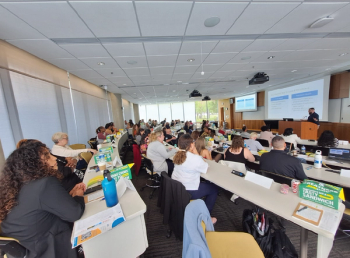
- April 2010 Allergy & Asthma
- Volume 76
- Issue 4
Pharmacy Technology News
DEA Proposes Eye Scans for E-Prescriptions
An interim ruling by the Drug Enforcement Administration (DEA) could change the way prescriptions for controlled substances are recorded and processed.
The new ruling, published March 24, 2010, in the Federal Register, proposes the use of sophisticated security measures to authenticate the prescriber’s identity, enabling the secure electronic transmission of prescriptions for Schedule II, III, IV, and V drugs. In addition to traditional passwords and external devices, the ruling would allow the use of biometric data, such as fingerprints or eye scans, to verify a physician’s identity.
The allowance is a departure from the agency’s current regulations, which the DEA said were developed “at a time when most transactions—and particularly prescriptions—were done on paper.” They require prescriptions for controlled substances to be printed in hard copy, signed by a physician, and, if needed, faxed to pharmacies.
If implemented, the new policy could boost the nation’s adoption of electronic prescriptions, which accounted for approximately 18% of all eligible prescriptions in 2009, according to a Surescripts report. The policy is subject to congressional review for a 60-day period. For more information, view the full 334-page proposal at
Gadgets Hard-Wired for Better Health
Researchers from the Cleveland Clinic and Microsoft are collaborating to examine the benefits of interactive medical devices that bridge the communication gap between patients and their health care providers. The project has yielded promising results, especially for patients with chronic diseases.
The study involved more than 250 participants with diabetes, heart failure, and hypertension. Depending on their condition, patients were issued heart rate monitors, glucose meters, scales, pedometers, or blood pressure monitors. All devices continuously uploaded patients’ data to HealthVault, Microsoft’s secure online database, where it was accessible to physicians through their electronic medical record systems.
Success was measured in time spent between office visits, a crucial metric for patients with conditions that require long-term management. In patients with diabetes and hypertension, days between appointments increased by 71% and 26%, respectively. For this group, fewer appointments meant they were in control of their conditions. In patients with heart failure, days between appointments decreased by 27%—a positive change, researchers noted in a press release.
Redesigning Diabetes Management
Three years ago, prolific diabetes blogger Amy Tenderich delivered an impassioned appeal to Steve Jobs: make our medical devices better. Tenderich wanted Jobs to apply his team of Apple geniuses— whom she called “The Gods of Consumer Design”—to the task of improving the look, feel, and functionality of blood glucose monitors and insulin pumps.
Jobs didn’t respond to the letter, but other innovators did, creating a spark that eventually ignited into a full-fledged design challenge. Now an annual competition, the DiabetesMine Design Challenge offers 3 winners a $7000 prize and opportunities to consult with industry experts to help realize their designs.
The contest is sponsored by the California HealthCare Foundation and has gained a high profile among pioneering forces in diabetes research. Aaron Kowalski, research director of the Juvenile Diabetes Research Foundation’s Artificial Pancreas Project, praised the competition’s focus on design principles, which he says can “transform diabetes management and improve the quality of life for millions of people.”
Tenderich encourages anyone interested in diabetes management to participate by voting for their favorite entries online or submitting ideas for consideration. “This competition is open to all,” Tenderich said on her blog. “We welcome entries from any individuals or organizations passionate about diabetes and product design.”
Submissions will be collected until April 30, 2010, and winners will be announced in June. For more information, visit
Tech Coalition Targets Stone Age Privacy Laws
Enacted in 1986, the Electronic Communications Privacy Act (ECPA) was designed to protect the electronic documents of private citizens from undue interference by law enforcement officials. In 2010, our devices are inextricably linked to our identities, and our digital footprints are bigger than ever. The ECPA has remained largely the same, however.
To address the issue, a coalition is calling for major reforms to the ECPA that reflect the role technology has come to play in our everyday lives. Digital Due Process (DDP)—whose members include technology giants Google and Intel, along with a host of human rights groups and research institutions—aims to update the 24-year-old legislation in 4 key areas, Google said on its blog.
The first 2 reforms focus on search warrants, which the coalition argues should be mandatory to obtain private data stored online or track locations using cell phone signals. DDP is also pushing for laws that require the government to demonstrate in court its need to monitor online conversations or request data about large groups of individuals for the purposes of criminal investigations. For more information, visit
Articles in this issue
over 15 years ago
GERD Watchover 15 years ago
Diabetes Watchover 15 years ago
Tech Product Newsover 15 years ago
Rx Product Newsover 15 years ago
Drug Interactions with Tyrosine Kinase Inhibitorsover 15 years ago
Coagulation Counselingover 15 years ago
Controlling and Treating Asthmatic ConditionsNewsletter
Stay informed on drug updates, treatment guidelines, and pharmacy practice trends—subscribe to Pharmacy Times for weekly clinical insights.























































































































































































































